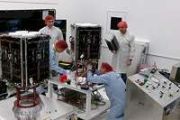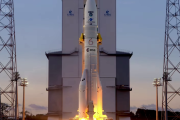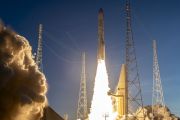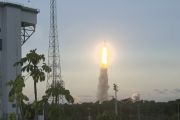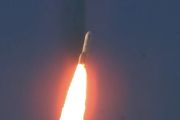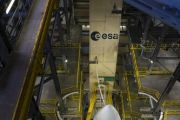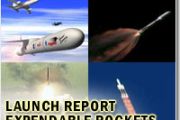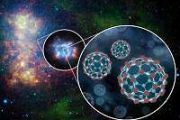
Copernical Team
Clues from Butterfly Nebula dust advance knowledge of rocky planet origins
 Clues about the formation of Earth-like planets have emerged from the Butterfly Nebula NGC 6302, where astronomers used the James Webb Space Telescope and ALMA to probe its dusty heart. The combined observations revealed crystalline silicates, irregular dust grains, jets of iron and nickel, and even carbon-based molecules thought to be precursors of life.
Lead researcher Dr Mikako Matsuura
Clues about the formation of Earth-like planets have emerged from the Butterfly Nebula NGC 6302, where astronomers used the James Webb Space Telescope and ALMA to probe its dusty heart. The combined observations revealed crystalline silicates, irregular dust grains, jets of iron and nickel, and even carbon-based molecules thought to be precursors of life.
Lead researcher Dr Mikako Matsuura Britain's energy grid bets on flywheels to keep the lights on
 Britain's energy operator is betting on an age-old technology to future-proof its grid, as the power plants that traditionally helped stabilise it are closed and replaced by renewable energy systems.
Spinning metal devices known as flywheels have for centuries been used to provide inertia - resistance to sudden changes in motion - to various machines, from a potter's wheel to the steam eng
Britain's energy operator is betting on an age-old technology to future-proof its grid, as the power plants that traditionally helped stabilise it are closed and replaced by renewable energy systems.
Spinning metal devices known as flywheels have for centuries been used to provide inertia - resistance to sudden changes in motion - to various machines, from a potter's wheel to the steam eng AI systems developed to improve fusion reactor safety and performance
 A research team led by Prof. Sun Youwen at the Hefei Institutes of Physical Science of the Chinese Academy of Sciences has unveiled two artificial intelligence systems designed to enhance the stability and efficiency of fusion experiments. Their results appear in the journals Nuclear Fusion and Plasma Physics and Controlled Fusion.
Fusion energy promises clean, virtually inexhaustible powe
A research team led by Prof. Sun Youwen at the Hefei Institutes of Physical Science of the Chinese Academy of Sciences has unveiled two artificial intelligence systems designed to enhance the stability and efficiency of fusion experiments. Their results appear in the journals Nuclear Fusion and Plasma Physics and Controlled Fusion.
Fusion energy promises clean, virtually inexhaustible powe Circle versus rectangle: Finding 'Earth 2.0' may be easier using a new telescope shape
 The Earth supports the only known life in the universe, all of it depending heavily on the presence of liquid water to facilitate chemical reactions. While single-celled life has existed almost as long as the Earth itself, it took roughly three billion years for multicellular life to form. Human life has existed for less than one 10 thousandth of the age of the Earth.
All of this suggests
The Earth supports the only known life in the universe, all of it depending heavily on the presence of liquid water to facilitate chemical reactions. While single-celled life has existed almost as long as the Earth itself, it took roughly three billion years for multicellular life to form. Human life has existed for less than one 10 thousandth of the age of the Earth.
All of this suggests Earth's chemistry settled early but later collision likely delivered water for life
 Earths chemical make-up reached completion within the first three million years of the Solar Systems formation, according to a new study by the University of Berns Institute of Geological Sciences. However, this early Earth, known as the proto-Earth, lacked volatile elements such as water and carbon compounds that are essential for life.
The findings, published in Science Advances, suggest
Earths chemical make-up reached completion within the first three million years of the Solar Systems formation, according to a new study by the University of Berns Institute of Geological Sciences. However, this early Earth, known as the proto-Earth, lacked volatile elements such as water and carbon compounds that are essential for life.
The findings, published in Science Advances, suggest Elbit Systems JUPITER camera deployed on NAOS satellite with OHB Italia partnership
 Elbit Systems has confirmed the successful launch of its JUPITER space camera aboard the National Advanced Optical System (NAOS) satellite, built by OHB Italia. The spacecraft lifted off from Vandenberg Space Force Base in California on a SpaceX Falcon 9, beginning its role in diverse Earth observation missions.
Developed by Elbit Systems ISTAR and EW - ELOP, JUPITER is described as one of
Elbit Systems has confirmed the successful launch of its JUPITER space camera aboard the National Advanced Optical System (NAOS) satellite, built by OHB Italia. The spacecraft lifted off from Vandenberg Space Force Base in California on a SpaceX Falcon 9, beginning its role in diverse Earth observation missions.
Developed by Elbit Systems ISTAR and EW - ELOP, JUPITER is described as one of Space Kinetic joins DraperSPARX partnership to advance national security technologies
 Draper has added Space Kinetic Corp. to its DraperSPARX program, an initiative that accelerates emerging technologies from startups and small businesses to address pressing national security challenges.
Space Kinetic recently secured more than $12 million in venture funding to expand its work in space superiority and missile defense. Its proprietary electromechanical system can deploy smal
Draper has added Space Kinetic Corp. to its DraperSPARX program, an initiative that accelerates emerging technologies from startups and small businesses to address pressing national security challenges.
Space Kinetic recently secured more than $12 million in venture funding to expand its work in space superiority and missile defense. Its proprietary electromechanical system can deploy smal NISAR clears on orbit checks and readies for science data flow
 After its July 30 launch, the NASA-ISRO NISAR radar mission cleared preliminary health checks and on Aug 15 unfurled its 39-foot 12-meter reflector, then powered up both L-band and S-band SARs. Orbit raising toward a 464-mile 747-kilometer mean altitude began Aug 26, with science-quality images expected within weeks.
Full science begins about 90 days after launch.
he first dual-SAR missio
After its July 30 launch, the NASA-ISRO NISAR radar mission cleared preliminary health checks and on Aug 15 unfurled its 39-foot 12-meter reflector, then powered up both L-band and S-band SARs. Orbit raising toward a 464-mile 747-kilometer mean altitude began Aug 26, with science-quality images expected within weeks.
Full science begins about 90 days after launch.
he first dual-SAR missio NUVIEW wins $5M Pentagon funding boost for orbital LiDAR project
 NUVIEW has secured an additional $5 million award from the Department of Defense's National Security Innovation Capital program to accelerate development of its space-based LiDAR technology. The funding follows earlier NSIC investment and supports the company's mission to deliver high-resolution, three-dimensional mapping of Earth from orbit.
The award will allow NUVIEW to rapidly prototyp
NUVIEW has secured an additional $5 million award from the Department of Defense's National Security Innovation Capital program to accelerate development of its space-based LiDAR technology. The funding follows earlier NSIC investment and supports the company's mission to deliver high-resolution, three-dimensional mapping of Earth from orbit.
The award will allow NUVIEW to rapidly prototyp USGS introduces first fully integrated national geologic map
 In a major milestone for earth sciences, the U.S. Geological Survey (USGS) has released its most comprehensive national-scale geologic map to date, offering an unprecedented view of the geology both at and beneath the surface across the continental United States.
The new Cooperative National Geologic Map compiles data from more than 100 existing maps and provides the first nationwide platf
In a major milestone for earth sciences, the U.S. Geological Survey (USGS) has released its most comprehensive national-scale geologic map to date, offering an unprecedented view of the geology both at and beneath the surface across the continental United States.
The new Cooperative National Geologic Map compiles data from more than 100 existing maps and provides the first nationwide platf 









